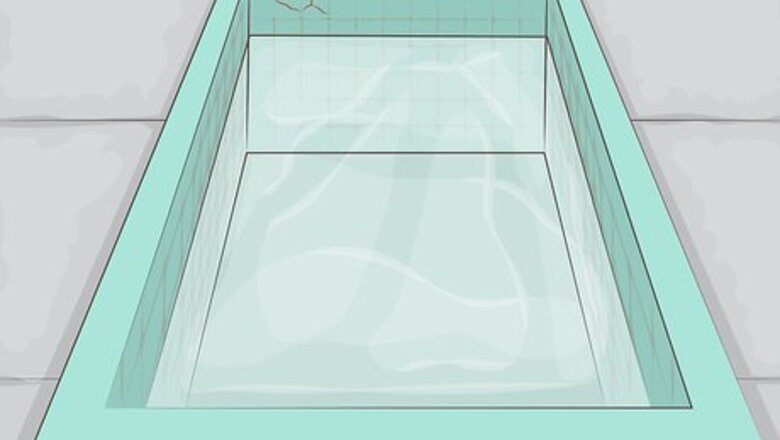
views
Removing Cracked or Damaged Tiles
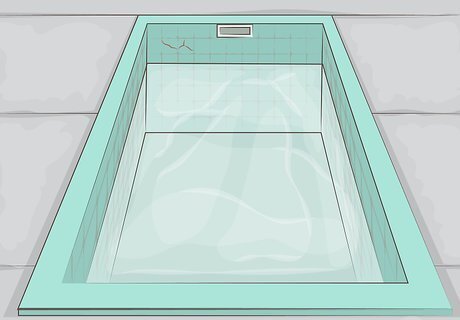
Drain your pool below the tiles that need replacing and let the area dry. Use a submersible pump to drain out enough water to leave the damaged area exposed and dry. Once the area is clear, turn off the pump and let the tile dry off completely. It’s best to do this in bright sunlight, which will dry the tile quickly. If you’re only replacing a couple tiles along a top edge, you’ll only need to drain enough water to expose the area and keep it from being splashed. If you’re redoing your entire pool, drain all of the water and let it sit for a day or 2, until it’s fully dry. There are also special adhesives available for re-attaching single tiles underwater. However, your repair will be much more effective and durable if you drain your pool first.
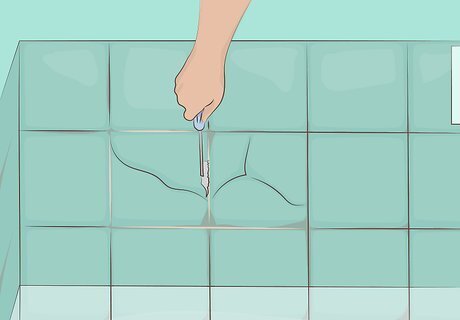
Use a grout saw to remove the grout around any cracked tiles. This tool essentially looks like a screwdriver with a saw blade on the end of it. Push the blade end against the grout and saw it back and forth to cut through the grout. Keep cutting through until you remove all of the grout around the tiles that need to be replaced.
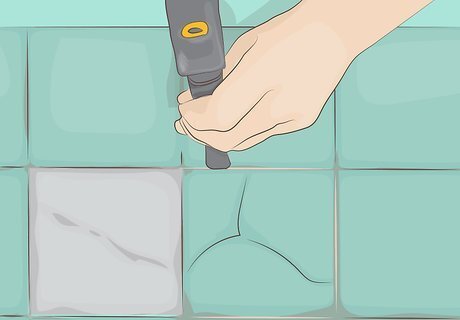
Use a hammer and chisel to remove any damaged tiles. Place the tip of the chisel in the joint of the cracked tile, then tap it with the head of the hammer to break the tile away from the mortar. Keep tapping until the whole tile comes away, then repeat on any other damaged tiles. If your tiles are small, you can use a small flathead screwdriver instead of a chisel.
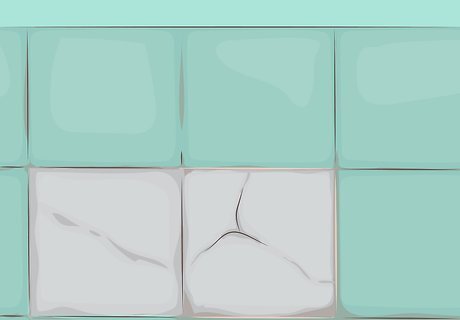
Inspect the beam behind the tile for any necessary repairs. Look for cracks, open seams, an uneven surface, or missing chunks in the beam. If the damage is greater than some damaged tiles, you’ll need to shore up the base with hydraulic cement or a plaster mix. This is essential for ensuring the longevity of your pool as well as creating a flat surface for the tile to stick to. If the damage looks like it could be extensive, contact a professional full-service pool company to help diagnose and repair the problem.
Finding Replacement Tiles
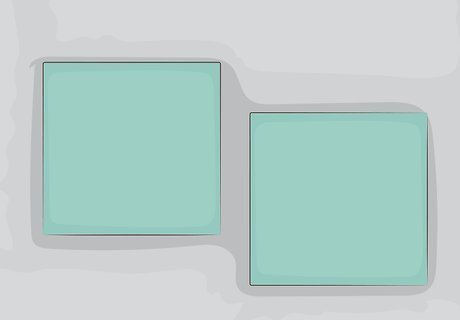
Use the old tiles if they’re still intact. If the tiles came off but they’re still in 1 piece, you can simply re-attach them! This will save you a lot of time, instead of trying to find new tiles that fit the pattern or space available. When the tiles fall off, keep them together in a safe spot where they won’t get bumped, cracked, or lost.
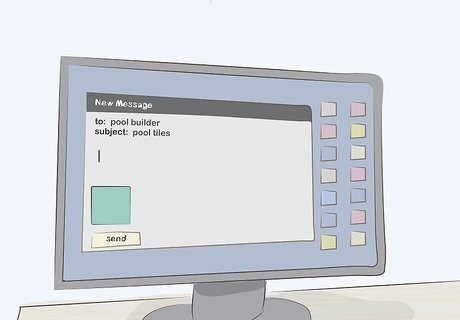
Ask your original pool builder for tile, if possible. If you know who built your pool and they’re still available, they may still have extra tiles handy. Send them an email, including a picture of the tile and a quick description, and ask if they have access to any extra tiles. You’ll also need to ask for a price, which may be discounted due to your past business.
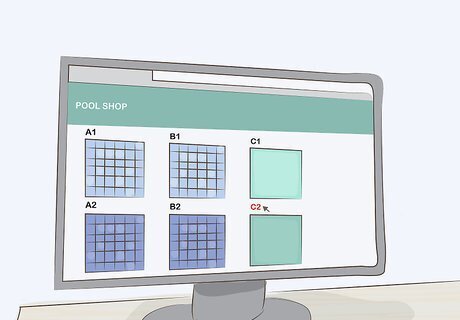
Check online or at local pool stores for similar or identical tiles. Pool stores are good for comparing colors up close, but online pool tile catalogues will likely give you the most variety to choose from. Settle for a close match if the repair is in a less obvious area, such as somewhere you can’t see from the house. As long as the color is the same and the shape and size are similar, they probably won’t stand out too much!

Have tiles custom-made to match your original tiles exactly. This option is more expensive, but if you can’t find a match for your tiles, this will give you the most seamless repair. Consult with a custom tile company to see if they can recreate your tile. Bring photographs of the original tile to give them a reference. To find a custom tile company, look online or locally and set up a consultation.
Installing New Pool Tiles
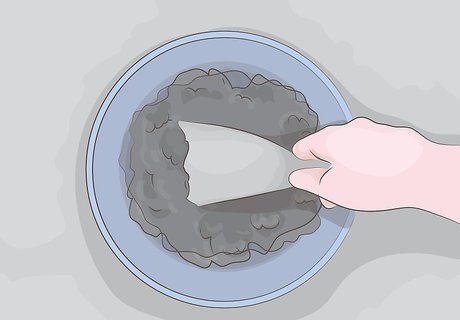
Mix up a batch of swimming pool thinset repair mortar. Follow the instructions on the packaging to measure and mix the mortar and water. Use a trowel to stir the mixture in a plastic container or metal bowl. Keep adjusting the proportions as needed until the mixture reaches a spreadable, peanut butter-like consistency. Stir well to get rid of any lumps. The thick, spreadable consistency will help keep the mortar from dripping into the pool water. Some thinset mortars also come with a bonding agent, which increases the adhesive quality. Mix equal parts mortar and bonding agent, then add water until the mixture thickens to a creamy, spreadable texture.
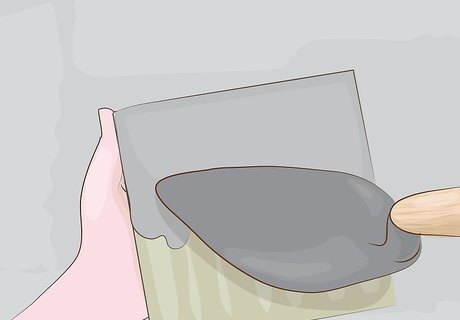
Spread a ⁄8 inch (0.32 cm) layer of thinset on the back of the new tile. With your trowel, scoop up a daub of thinset and smooth it out over the entire back of the tile, all the way up to the edges. Line the tile up on the pool wall so it matches any existing pattern, then press it firmly against the beam. Thinset dries quickly, so make sure to place the tile immediately after covering the back.

Keep the tiles in place while they dry for 24-48 hours. Check on the tiles’ progress every 10 minutes for 1-2 hours to see if they’ve slipped down the pool wall. If any small tiles slip, simply slide them back up and press them into place. For larger tiles, you should duct tape them into place while they dry. 24 hours should be enough to dry the thinset mortar, but waiting up to 48 hours will let it cure and harden even more.
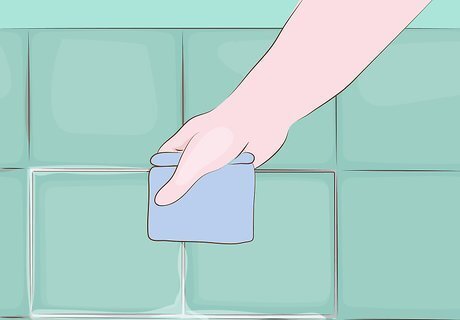
Use waterproof tile grout to fill in the spaces between the tiles. Load up a flexible spreader with grout and push the product between the tiles. Once you’ve filled up the space, let the grout set for 10-15 minutes, then use wet your hands and gently rub at any excess grout smeared on the tiles. To avoid dropping any daubs of grout into the pool, work with small amounts at a time. If the dried-on grout is stubborn, wait 24 hours and scrub the tiles with a stiff brush to polish and remove any haze. After letting the grout dry for 24 hours, you can refill the pool and enjoy the product of your hard work!

















Comments
0 comment